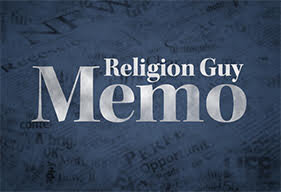A narrowly-framed Supreme Court victory — the Fulton v. Philadelphia case — will allow Catholic Charities (at least for now) to preserve religious conscience and avoid placing foster children and children available for adoption with same-sex couples, despite the city’s non-discrimination statute.
However, this does not settle the many similar legal disputes the media will be covering the next few years.
In particular, reporters will want to carefully monitor Hunter v. U.S. Department of Education, a potentially huge lawsuit filed in Oregon federal court March 29. This is a class action with 33 plaintiffs represented by Portland attorney Paul Southwick, director of the Religious Exemption Accountability Project or REAP (paul@paulsouthwick.com and 503-806-9517). Alliance Defending Freedom, a familiar participant in such matters, has filed a bid to defend the religious schools (media@adflegal.org or 480-444-0020). There are questions about the degree to which the current Justice Department will help in this defense.

The suit charges that LGBTQ students suffer “abuses and unsafe conditions” at “hundreds” of U.S. religious colleges with traditional doctrinal covenants so government should cut off their financial aid. Except for Brigham Young University and the Church of Jesus Christ of Latter-day Saints, REAP’s targets are Protestant, led off by Oregon’s George Fox University, a venerable Quaker campus attended by Herbert Hoover when it was a mere secondary school. George Fox’s mission statement declares that “we desire the presence of Christ to be at the core of all we do.”
Others include the likes of Azusa Pacific University, Baylor University, Bob Jones University, Dordt University, Eastern University, Fuller Theological Seminary, Liberty University, Messiah University, Moody Bible Institute, Seattle Pacific University, Union University and Westmont College. (Notably missing: Calvin, Gordon, Wheaton.)
Loss of aid for students would be a severe competitive blow in coming years when all colleges and especially private and religious ones expect to suffer declines in the student-age population and thus in applications, this on top of the institutional damage wrought by COVID-19. There are also prospective attacks on such schools’ tax exemption and academic accreditation over sexuality. The status of athletic programs is also a hot-button issue.
There is plenty of education money available apart from government, but reporters should note the status of specifically religious campuses in a heads-up Ministry Watch analysis by Colorado freelance Steve Rabey, a former member of the GetReligion team. He discusses the June 15 announcement of $2.7 billion in charity gifts by Jeff Bezos’s ex-wife MacKenzie Scott, which comes on top of her $6 billion in 2020 giving. Scott’s personal wealth has been estimated at $60 billion.
The grants list shows major money went to 25 junior and four-year colleges, focused on those that successfully educate students “from communities that have been chronically underserved.” That could have included some religious schools but, Rabey points out, none were aided. The eight faith-based recipients included were on the progressive end of things with a focus on subjects like racial and LGBTQ equality, immigrant aid and countering bias against Muslims.
The world of philanthropy is far more shaken up by the May announcement that Bill and Melinda Gates are divorcing. As of New Year’s Day the foundation they have co-chaired had assets of $52 billion. It donates $5 billion or so per year plus an annual $2 billion or more in grant money it manages for Nebraska investor Warren Buffett, a foundation trustee whose personal wealth is in the $100 billion range.
Here again, these colossal resources are very unlikely to flow to doctrinally conservative religious schools or charities. Gates grants are aimed at gender equality, global health and development, abortion rights and giving low-income Americans “access to the opportunities they need to succeed in school and life.”
Despite all the media interest in big-money personalities in evangelical Protestantism and the “religious right,” the serious piles of American cash lie elsewhere.
The college aspect of current philanthropy brings to mind one of the more fascinating episodes in “A Prophet With Honor,” Rice University sociologist William Martin’s important biography of the past century’s premier evangelical, the Rev. Billy Graham. Early in his rise to fame Graham at age 29 had been recruited to be the nation’s youngest college president, at what is today University of Northwestern in Minnesota (not to be confused with Northwestern University). He soon resigned to focus on his evangelistic rallies.
Years later Graham became concerned about evangelicalism’s need for more intellectual heft and spoke openly in 1966 about founding a new, high-quality Christian university with professors committed to his conservative belief in the Bible. More than 20 cities offered him land and promises of financing but the top prospect would have combined Graham’s fundraising prowess with a thousand-acre plot in Palm Beach Gardens, Florida, offered by insurance magnate John D. MacArthur (1897-1978). MacArthur’s father was a Christian and Missionary Alliance evangelist Graham admired.
But as in Minnesota, Graham’s board and close colleagues were cool on the idea and he suddenly backed out. Martin said that “offended and permanently alienated” MacArthur and the trustees managing his vast fortune, who could have helped other evangelical causes.
Today, no evangelical resource is remotely in that league. Also, it’s interesting to contemplate how the path of U.S. evangelicalism might have been different with a Graham University alongside Oral Roberts University or Jerry Falwell’s Liberty University.










